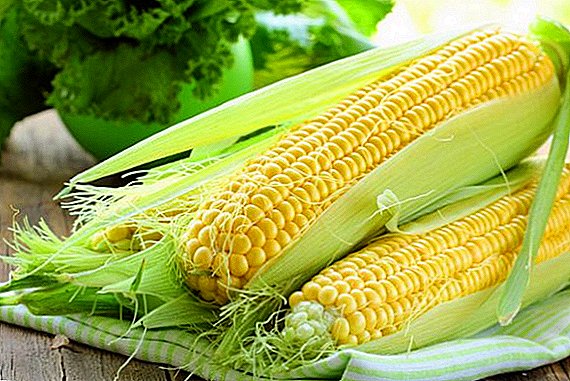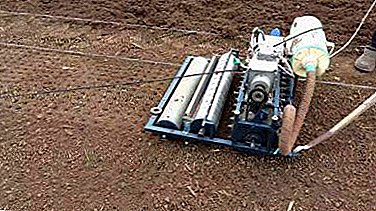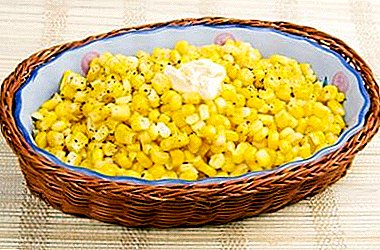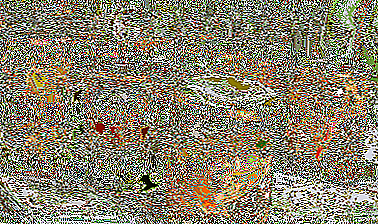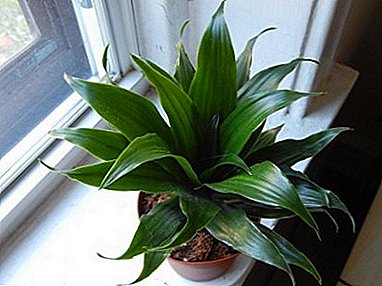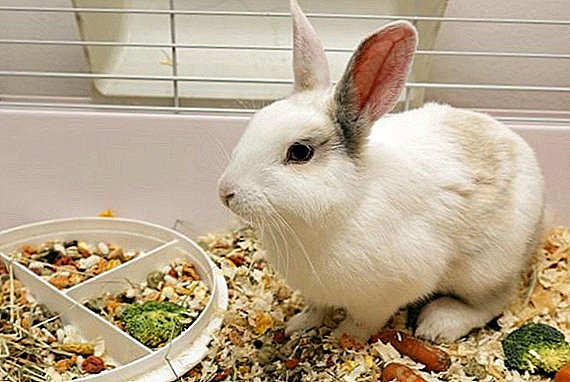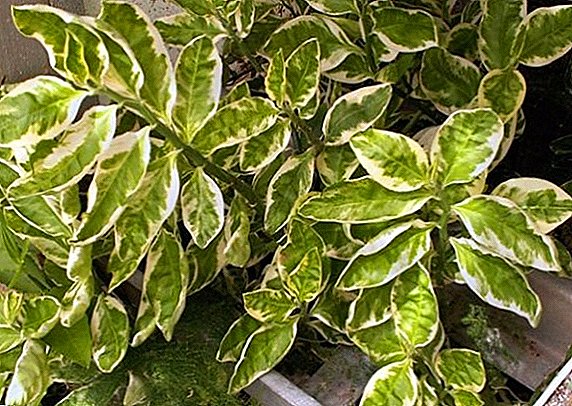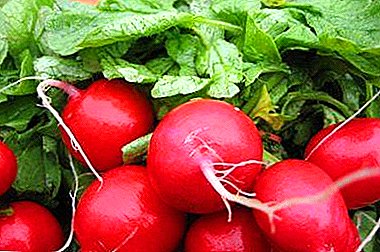
One of the best, and therefore popular varieties of radish is "Rudolph F1" (F1 label indicates that it is a hybrid in the first generation). Gardeners speak of him as reliable and very tasty, noting excellent germination and yield, as well as extremely fast ripening.
This article will tell you about the characteristics of the Rudolf F1 hybrid, its differences from other hybrids and varieties, the pros and cons of using this hybrid, the areas of use and characteristics of the variety, as well as give some useful tips on growing and tell about similar species.
Description and characteristics
- Appearance. Root crop is round, smooth, bright red, the flesh is white, juicy, weak-pointed.
- Sowing time. This is an ultra early universal variety, it is sown in the ground at the end of April or the beginning of May at a depth of 1 cm according to the scheme: 5-7 cm by 15 cm.
- What is the yield of 1 ha. Productivity - 30 tons. Root crops gain weight intensively, ripen almost simultaneously.
- Where it is recommended to grow. The hybrid is suitable for cultivation in the open and in the protected ground.
- Disease resistance. The variety has a strong immunity to various problem and even dangerous diseases, and also perfectly resists tsvetushnosti.
- Ripening. Very early productive variety - from the emergence of shoots to technical ripeness usually takes 20-23 days. Period from sowing to harvest:
- in open ground for 20-24 days;
- in closed 18-20 days.
Important! These ripening terms on the packaging are conditional and largely depend on the climate of a particular region, the degree of soil fertility, the conditions of crop cultivation and many other factors. - What kind of soil prefers. Light, structured, well-fertilized soils, the humidity of which must be constantly maintained.
Breeding
High-quality radish seeds of the Rudolf F1 variety are produced by the well-known company Bejo Zaden (Holland).
What is the difference from the rest?
"Rudolph F1" stands out in the first place exceptional taste. It also differs from other types of radish in that it is a slightly leafy plant, it has a short, only 15 cm, tops.
Advantages and disadvantages
 The advantages of a hybrid, first of all, include the fact that:
The advantages of a hybrid, first of all, include the fact that:
- This is a very early variety of radish.
- In addition, it tolerates insufficient illumination during cultivation in the autumn-winter and early spring periods, is resistant to diseases, high temperatures and is not prone to tsvetushnosti.
- Fruits do not form voids when overlapping on the vine for more than two weeks, do not become rigid, growing to 5 cm in diameter, have an excellent presentation.
- Potentially possible to gain weight of the fetus to 25 g.
- Radish pulp has a juicy texture and is able to maintain elasticity for a long time.
Probably the only disadvantage of this variety of radish can be considered the size of the root - it does not belong to the largest.
What and where is it used for?
Basically This variety of radish is used for early harvest..
Like any type of radish, "Rudolph F1" is not subjected to heat treatment, it is not salted, not pickled, etc., and is only used fresh, usually for salads.
Peculiarities of this variety
- Growing up. When growing "Rudolph F1" it is desirable to observe the following seeding rates:
- September-October - 400-500 seeds / m²;
- January-April - 400-500 seeds / m²;
- November-December - 300-400 seeds / m².
- Harvesting and storage. Selective harvest of radish is possible already on the 16th day. Under the right conditions, it can be stored for several months without losing the quality of the root crop. At home, after a continuous harvesting, the roots are cut, washed, dried and stored in a refrigerator for 2-3 weeks.
- Diseases and pests. Some of the diseases of radish affect the leaves, sometimes the stems, others - its root. There are diseases that appear only during storage. Radish diseases include:
- mucous bacteriosis;
- white rot;
- gray rot;
- radish mosaic;
- cruciferous powdery mildew;
- perinospora;
- blackleg;
- kila
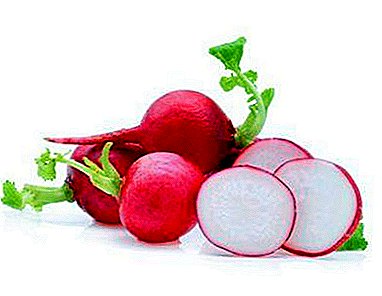 Many of the diseases of radish are effectively cured by the introduction of additional fertilizer into the earth. The main drug in this case is wood ash, as well as infusions and solutions based on it.
Many of the diseases of radish are effectively cured by the introduction of additional fertilizer into the earth. The main drug in this case is wood ash, as well as infusions and solutions based on it.The main pests of radish, as well as all similar plants, are aphid and cruciferous flea. From the cruciferous flea it is good to pollinate the shoots with ash, tobacco dust, red pepper. In addition, flea is afraid of irrigation by sprinkling.
- Prevention of various problems. Despite the resistance of the Rudolf F1 variety to diseases, prevention never hurts. To get a rich harvest on time and constantly take care of the plants. It implies watering, weeding, monitoring the state of radish, so that when any disease appears, not to miss the opportunity to immediately eliminate the problem, since it is much easier and faster at the initial stage than it is already in a state of neglect.
As a prophylactic from a cruciferous flea, you can simply not remove the covering material until the seedlings are mature. To scare away the pests you can use wood ash mixed in equal parts with tobacco dust or lime. Pollination repeat 2-3 times every 4-5 days, starting from the moment of emergence.
Many radish diseases are avoided due to the following prevention:
- removal of soil from last year’s plants;
- elimination of waterlogging;
- periodic soil enrichment with mineral and organic fertilizers.
When planting radish in the spring on the edge of the beds it is useful to sow mustard, wormwood, strongly smelling flowers. On them useful insects fly and destroy pests.
Important! To combat pests and diseases, only those registered in the region can and should be used. For more detailed information on drugs, contact a specialist plant protection products.
Similar species
In addition to the Rudolf F1 variety, the gardener may be interested in other early radish hybrids with the same round red roots and exceptional taste, for example:
- "Poker F1".
- Reggae F1.
Radish is one of the first spring vitamin crops grown in most vegetable gardens.. Vegetable is so familiar that rarely anyone thinks about the diversity of its varieties.
Meanwhile, the Dutch radish "Rudolph F1" has a number of excellent qualities: it is able to adequately withstand the lack of light, to resist diseases and pests, it is stable and high-yielding, cold-resistant and highly productive variety.


 Many of the diseases of radish are effectively cured by the introduction of additional fertilizer into the earth. The main drug in this case is wood ash, as well as infusions and solutions based on it.
Many of the diseases of radish are effectively cured by the introduction of additional fertilizer into the earth. The main drug in this case is wood ash, as well as infusions and solutions based on it.